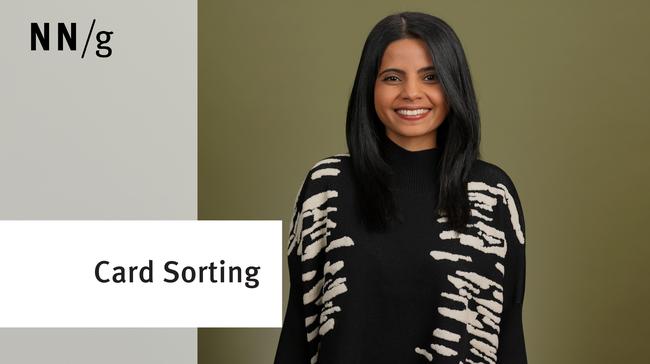Sorting a list of options alphabetically has two main benefits:
- If users know the name of the thing they want, they can usually find it in the list pretty quickly.
- Lazy design teams don't have to work on figuring out a better structure. Because we all know our ABCs anybody can put the items into the correct sequence.
The first of these is a true benefit, and alphabetical sorting works fine in some cases. For example, it's usually easy enough to pick out a state from an alphabetical list of the 50 U.S. states. Indeed, in this case, an alpha listing is more usable than, say, grouping the states by region or showing them on a map — at least when users need to click only one state (usually their own) to navigate to a page with state-related information.
(Listing states alphabetically is a good choice only when people have to select one state from a menu for navigation or a command. When users need to specify the state as part of their address — as in e-commerce checkout forms — it's better to present a text field where people can type the two-letter abbreviation; this is both faster and less error-prone.)
Lists of countries and other known-item problems are also often fine to alphabetize. However, you do need to ensure that users will know unambiguously the name of their selection. If people have to look at several places in the list, you've defeated the purpose of the A–Z order.
People Rarely Think A–Z
For most questions, either
- users don't know the name of the thing they want, making A–Z listings useless; or
- the items have an inherent logic that dictates a different sort order, which makes A–Z listings directly harmful because they hide that logic.
Here's an example of the latter from our recent testing of whether it's a good idea to copy the design of successful websites:

The left side of screenshot shows two of the options for narrowing the choices on Zappos category listing of women's shoes. Users can filter by width and heel hight (shown), as well as by style, color, and so on (not shown).
This form of faceted navigation is often useful, but only when users understand their choices. In our testing, users rarely employed filtering by width or heel height.
In this case, the order of choices presents major usability problems. It's hard to understand the width widget, and it's even harder to use it to select an appropriate range of widths. Imagine, for example, that you have wide feet and typically prefer shoes in widths EE or 3E. These two (consecutive measures) are at opposite ends of the widget. The same problem occurs if you prefer 1- or 2-inch heels.
A better width sorting would go from the narrowest to the widest: 4A, AAA, AA, ..., 3E, 4E. Few people are likely to understand the "OS" option; it should be spelled out ("One Size") and follow the logical sequence of individual widths.
Similarly, heel heights should be sorted from lowest to highest: Flat, Under 1in, 1in, ..., 5in & over.
Interestingly, after our study, Zappos redesigned their site: heel heights are now presented correctly, but widths are still alphabetized. So, they now have the usability of their faceted navigation half right.
Better Sorting than A–Z
Widths and heights are ordinal data, meaning that they have an inherent monotonically increasing sequence. Such items should almost always be sorted accordingly.
Other times, items have domain-related logical groupings. You can often determine this underlying logic in a card sorting study where you ask users to group related items together.
Time lines and geographical location are other groupings that are often useful. Finally, you can let the importance or frequency of use guide how you prioritize long listings rather than default to less-useful alphabetical sorting.
Depending on the nature of your information, usability might be better served by yet other types of structures. And yes, in a few cases, this might even be the alphabet. But typically, when you reach for an A–Z structure, you should give yourself a little extra kick and seek out something better.




